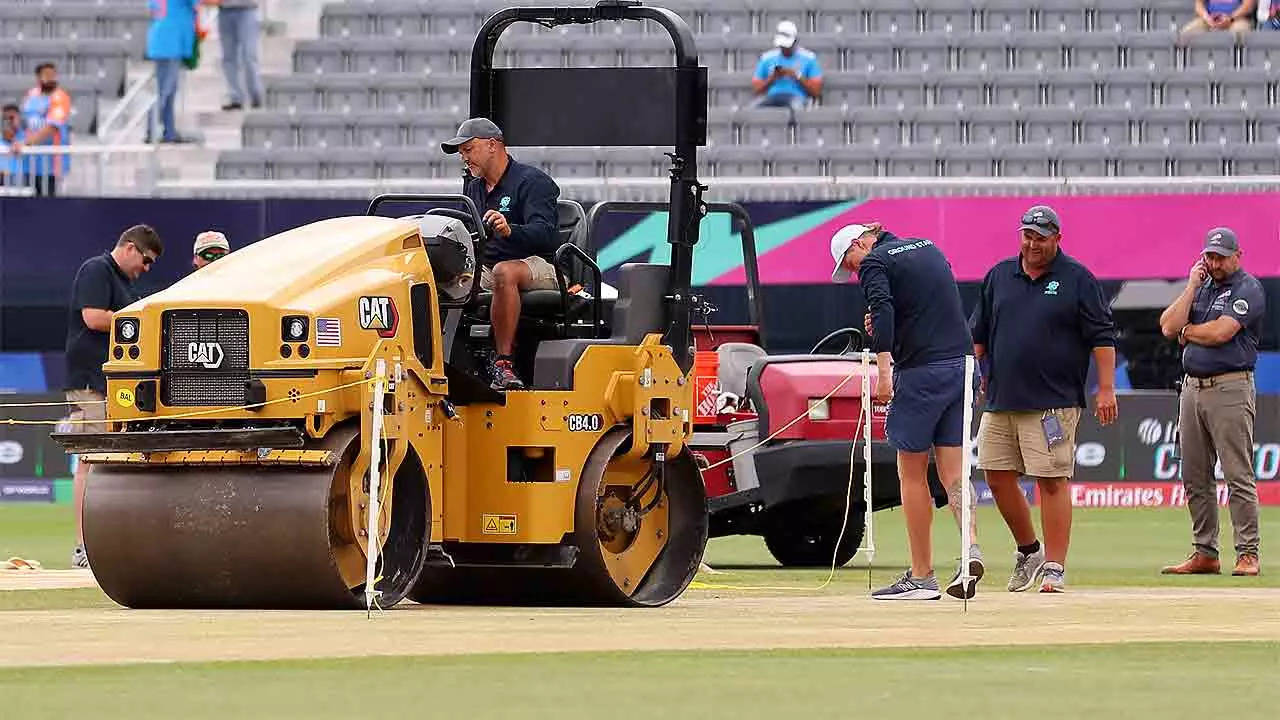NEW DELHI: Even though there have been many exciting games played, former Australian cricketer Ian Chappell stated that if the game is to be promoted in the US, it should not be allowed to continue on the risky and “ropey” pitches in the USA during the current ICC T20 World Cup.
T20 WORLD CUP: SCHEDULE | POINTS TABLEParticularly, the pitches at USA’s Nassau County International Stadium have drawn harsh criticism from both current and former players for their inconsistent bounce and subpar performance, which made batting extremely challenging to the point where even a score of 100-120 runs proved to be a match-winning total with few boundaries. Both pacers and spinners were greatly favored by the surfaces. The sluggish outfield received flak for creating boundaries and run-scoring, which uplifts the T20 game’s entertainment value.
According to ANI, in his column for the ESPNCricinfo, Chappell wrote, “The pitches in the USA again generated controversy, particularly the New York venue, which attracted a lot of negative publicity and proved to be difficult for batters. In many cases a score just exceeding 100 proved to be a match-winner.”
Chappell explained that the USA’s reputation for “dodgy pitches” is not new and may actually be linked to a five-match series in Los Angeles in 1999 between India A and Australia A, which included future greats VVS Laxman and Adam Gilchrist as captains.
“The USA’s reputation for providing dodgy pitches isn’t a recent one. In September 1999, I covered an India A vs Australia A five-match series in Los Angeles, where the respective skippers were VVS Laxman and Adam Gilchrist, both of whom went on to enjoy illustrious international careers,” he said.
“The pitches on that occasion could only be described as “ropey”, especially when genuine pacemen like Brett Lee operated. Dodgy pitches were accepted with a shrug of the shoulders in 1999 but, with the USA team qualifying for the Super Eight and being promoted as a viable cricket nation, this is not good enough. Mind you, USA cricket has long been wracked by organisational turmoil and this could be yet another example of the chaos that exists among their administration,” he added. He said while no pitches should totally favour batters, there are no excuses to have dangerous surfaces.
“There is a highly competitive cricket rivalry still to be played in the Super Eight – India vs Australia. This has become a blockbuster contest in recent years. Even if these two teams provide yet another exciting contest, it should not camouflage the USA problem. If cricket wants to make headway in the USA it has to vastly improve the administration and their pitches, while also convincing locally-born players it’s a game worth playing,” he added.
T20 WORLD CUP: SCHEDULE | POINTS TABLEParticularly, the pitches at USA’s Nassau County International Stadium have drawn harsh criticism from both current and former players for their inconsistent bounce and subpar performance, which made batting extremely challenging to the point where even a score of 100-120 runs proved to be a match-winning total with few boundaries. Both pacers and spinners were greatly favored by the surfaces. The sluggish outfield received flak for creating boundaries and run-scoring, which uplifts the T20 game’s entertainment value.
According to ANI, in his column for the ESPNCricinfo, Chappell wrote, “The pitches in the USA again generated controversy, particularly the New York venue, which attracted a lot of negative publicity and proved to be difficult for batters. In many cases a score just exceeding 100 proved to be a match-winner.”
Chappell explained that the USA’s reputation for “dodgy pitches” is not new and may actually be linked to a five-match series in Los Angeles in 1999 between India A and Australia A, which included future greats VVS Laxman and Adam Gilchrist as captains.
“The USA’s reputation for providing dodgy pitches isn’t a recent one. In September 1999, I covered an India A vs Australia A five-match series in Los Angeles, where the respective skippers were VVS Laxman and Adam Gilchrist, both of whom went on to enjoy illustrious international careers,” he said.
“The pitches on that occasion could only be described as “ropey”, especially when genuine pacemen like Brett Lee operated. Dodgy pitches were accepted with a shrug of the shoulders in 1999 but, with the USA team qualifying for the Super Eight and being promoted as a viable cricket nation, this is not good enough. Mind you, USA cricket has long been wracked by organisational turmoil and this could be yet another example of the chaos that exists among their administration,” he added. He said while no pitches should totally favour batters, there are no excuses to have dangerous surfaces.
“There is a highly competitive cricket rivalry still to be played in the Super Eight – India vs Australia. This has become a blockbuster contest in recent years. Even if these two teams provide yet another exciting contest, it should not camouflage the USA problem. If cricket wants to make headway in the USA it has to vastly improve the administration and their pitches, while also convincing locally-born players it’s a game worth playing,” he added.

